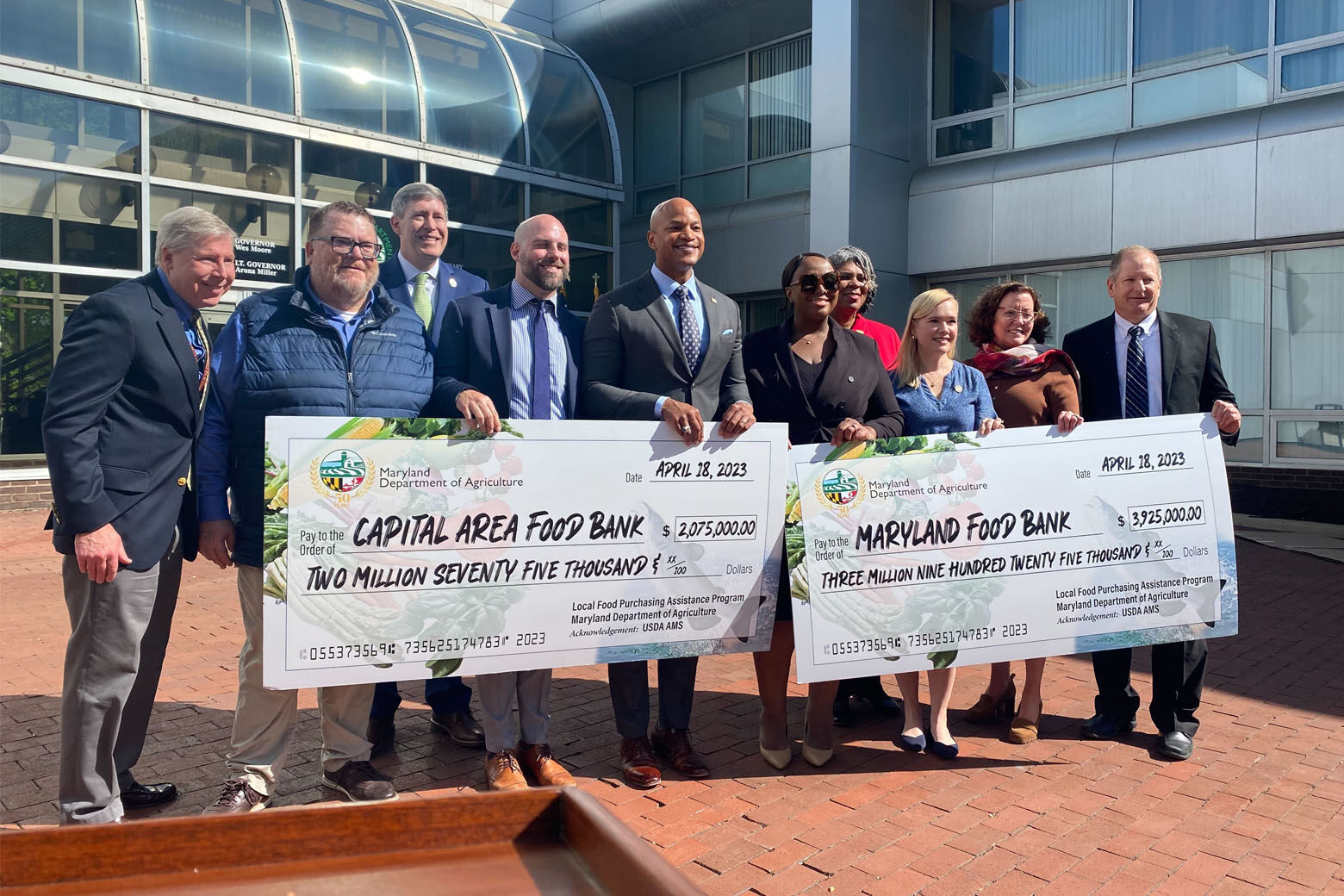
The Maryland Department of Agriculture is teaming up with the Maryland Food Bank and Capital Area Food Bank to get locally sourced food from Maryland farmers and watermen onto the tables of people in need.
Maryland Gov. Wes Moore was on hand in Annapolis on Tuesday to announce the new program.
“I’m really honored to be a part of this and really proud to be a Maryland farmer,” Nia Nyamweya told WTOP.
Nyamweya is the founder and farm manager of Beauty Blooms Farm in Damascus. She grows kale, eggplants, peppers and tomatoes and focuses on African heritage crops.
“It’s a win-win-win that we’re bringing local, nutritious fresh food to folks most in need in our communities,” she said.
She is one of the farmers that will now be supplying the local food banks with that produce.
Through federal grants from the USDA, the Maryland Department of Agriculture cut checks to the Maryland Food Bank and Capital Area Food Bank, totaling $6.1 million, to buy food from Maryland farmers and watermen.
The Maryland Food Bank will receive $2.3 million to purchase produce and $1 million to buy meat, eggs and milk from Maryland farmers.
Meanwhile, the Capital Area Food Bank also received a check for $1 million to purchase produce, $1 million to purchase other agriculture products, and $500,000 carved out to purchase blue catfish, an invasive species found in the Chesapeake Bay.
“This is a huge win for the Chesapeake Bay for waterman and for the hungry. It’s about connecting and growing to make farmers more profitable while addressing the food deserts and shortages inherent in our system,” said Maryland Agriculture Secretary Kevin Atticks at the announcement.
“Since the recent launch of this program, we’ve been able to source and distribute over 5,000 cartons of eggs; 3,600 gallons of whole milk; thousands of heads of lettuce, and other foods that are nutrient-dense, but also increasingly expensive,” said Adam LaRose, director of advocacy and public policy at Capital Area Food Bank, which serves Montgomery and Prince George’s Counties.
He said the group expects to provide 2.2 million healthy and Maryland-produced meals over the next two years.
Moore highlighted the need for the program, pointing to the fact that one in three Marylanders is food-insecure.
“We have families who are working hard, who are doing everything they’re asked, and who are still living at or below the poverty line,” he told the crowd. “We have children who every single day are going to schools knowing that the last meal that they received was what they had at lunch the day before.”
He added, “When we say that this is going to be a state that leaves no one behind, we mean exactly that.”








